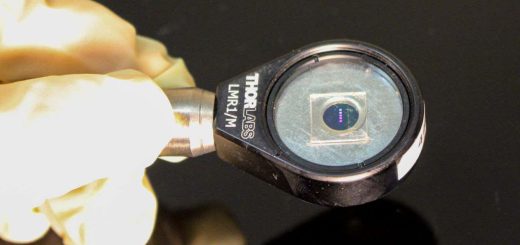Sound-based quantum computers could be built using chip-sized device
A chip-sized device can manipulate particles of sound in a way that mimics how particles of light are used in light-based quantum computers, opening the door for building sound-based quantum computers
By Karmela Padavic-Callaghan
8 June 2023
Quantum computers could be built that are based on sound
CVI Textures / Alamy Stock Photo
A crucial building block for quantum computers based on sound has been shown to work for the first time.
One popular way of building quantum computers is to encode information into quantum states of particles of light, then send them through a maze of mirrors and lenses to manipulate that information. Andrew Cleland at the University of Chicago and his colleagues set out to do the same with particles of sound.
Sound is created when an object or a substance, like air, vibrates. We hear it as a continuous noise, but it is actually a collection of tiny chunks of vibration, or particles of sound, called phonons.
Advertisement
“Making a phonon requires that quadrillions of atoms move collectively, but in our experiment, each is a single quantum object. Physicists sometimes make phonons sound like they are just a convenient trick for thinking about sound, but here they are very real,” says Cleland.
His team built a chip-sized device that has components made of a perfectly conducting material and can create phonons one at a time before sending them to other parts of the device. The chip is kept in a powerful fridge at a temperature a hundredth of a kelvin so that the phonons exhibit quantum effects. Each phonon was about a million times higher pitched than audible sound.
The researchers have previously built similar chips, but now they have added a component called a beam splitter. It consists of 16 tiny, parallel aluminium strips designed so that any sound that hits them gets reflected and transmitted in equal parts. But when the researchers sent a phonon into it, instead of splitting in two, it assumed a quantum superposition state where the whole particle was simultaneously in the state of being reflected and transmitted.


